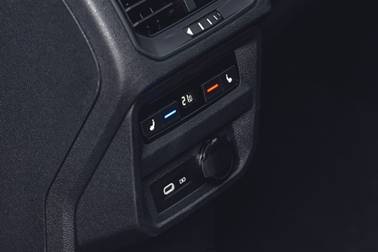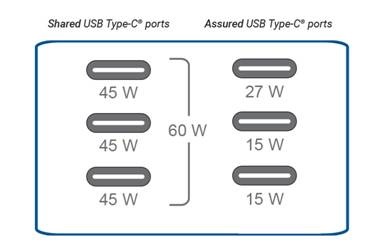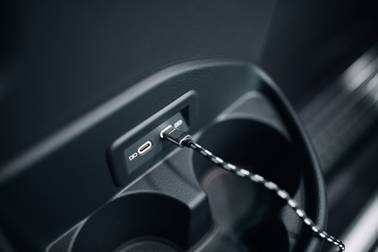Efficient and affordable USB power delivery for in-vehicle infotainment systems
Time:2024-05-28
Views:103

While USB Type-C® is primarily known as a next-generation, faster charging standard for laptops, tablets, and smartphones, it is also becoming increasingly popular in power delivery and connectivity applications. The speed and efficiency of USB Type-C is very high: With the development of the USB Power Delivery (USB PD) R3.1 specification, a single USB Type-C connector can support up to 240W (48V and 5A) of power, compared to the 7.5W (5V and 1.5A) of the USB Std-A connector, which is a significant increase.
The widespread adoption of USB Type-C is no accident, as the European Union, India, Brazil and South Korea have developed and implemented regulations that require portable personal electronics to be charged through a USB Type-C port.
As more and more consumer devices support USB Type-C and USB PD, the demand for USB Type-C and USB PD in automotive applications is also growing. Consumers want to be able to quickly charge devices in the car via a USB Type-C cable, as well as project content such as GPS displays, music players and even movies. The number of USB Type-C ports per vehicle is expected to increase from two to four in vehicles starting production in 2025. You may already be able to find USB Type-C ports in car stereo consoles, front seat chargers, rear seat chargers, and rear seat monitors.
Jeff Ravencraft, Chairman and Chief Operating Officer of USB Implementers Forum, said: "Many people today are benefiting from the widespread adoption and versatility of USB Type-C, and this technology is becoming the solution of choice for connecting an increasingly rich variety of technologies beyond personal devices. Whether it‘s easily connected to a favorite vehicle or seamlessly connected to a phone or other device, USB Type-C provides an efficient, interoperable and hassle-free experience that simplifies how consumers interact with technology in multiple scenarios."
When examining the application of USB Type-C in an automotive environment, there are many factors to consider. The convenience and flexibility of the port is essential for easily connecting devices for charging and/or data communication. The number of ports, distance requirements, and performance are managed by Pull Current Power Policy Management (SPM). In addition, the SPM integrates port configuration and the ability to operate under a variety of conditions, taking into account input voltage, temperature, and power distribution across multiple ports (see Figure 1 for an example).

Figure 1: USB PD power sharing between multiple ports
The TPS25772-Q1 is a two-port model in the Texas Instruments USB PD controller family. It integrates a buck/boost converter to supply power to the first port and provides an interface to control an external buck/boost converter that acts as a voltage and current source for the second port. On the TPS25772-Q1, all control takes place on a single USB PD controller with integrated SPM. You can indicate the design and behavior of the charger by controlling some knobs. Creating a custom configuration is as simple as answering a few questions or changing a few resistance values.
Size and cost matter, too. USB Type-C uses a slimmer connector with a height of only 2.4mm, which allows industrial products to be further miniaturized. This connector also meets the small space requirements of USB boxes in cars. Integrating these applications into very small Spaces and remaining cost-effective is a priority in automotive design, as shown in Figure 2.


Figure 2: Small dual USB Type-C ports for charging
Texas Instruments USB PD controller is fully integrated with power path and buck/boost converter. This all-in-one chip solution helps improve the efficiency and power density of automotive USB products.
The deployment of USB-C ports in cars is moving into a new phase, focusing not only on power delivery, but also on data connectivity. Not all ports in a car compartment have to operate in the same way. In the compartment, some ports can provide a higher level of charging capability and data transfer capabilities, and in the future may support USB DisplayPort™ alternate mode (which projects the source to the display) or USB4®, which can directly transfer DisplayPort™ Revision 2.1 content.
The above configuration is highly flexible, allowing designers to tailor the solution that best meets your needs in response to increasing regulatory and market demands. With novel hardware design and functional integration, we can help you lower the barrier to adoption of USB Type-C.
About Texas Instruments (TI)
Texas Instruments (TI) (NASDAQ: TXN) is a global semiconductor company that designs, manufactures, tests, and sells analog and embedded processing chips for markets including industrial, automotive, personal electronics, communications equipment, and enterprise systems. We are committed to making electronic products more economical and practical through semiconductor technology, and making the world a better place. Today, each generation of innovation builds on the last, making our technology smaller, faster, more reliable, and more affordable, enabling the widespread use of semiconductors in electronics and driving engineering progress.
|
Disclaimer: This article is transferred from other platforms and does not represent the views and positions of this site. If there is any infringement or objection, please contact us to delete it. thank you! |











